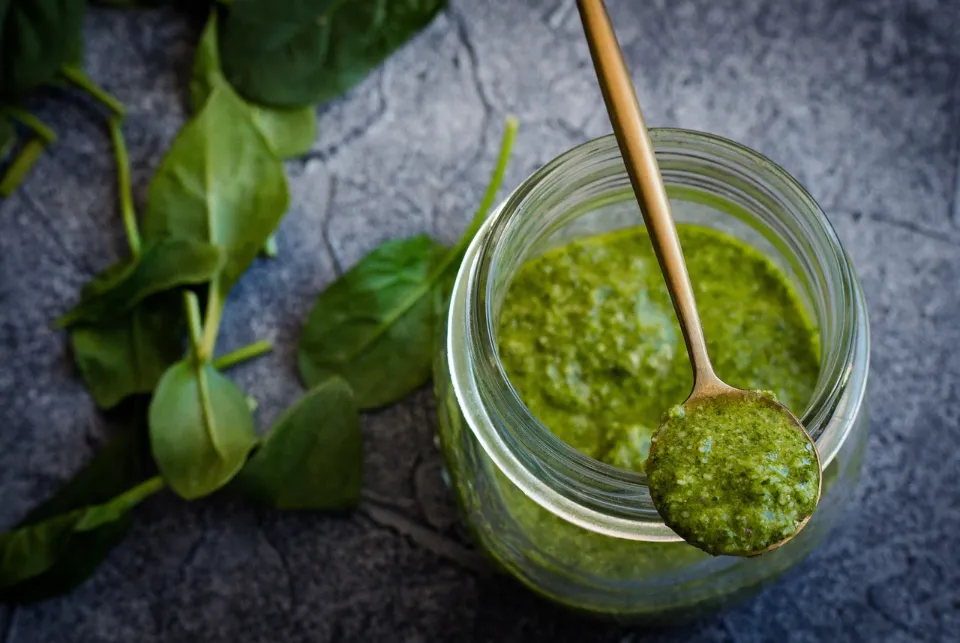
Can Dogs Eat Pesto – Canine Cuisine
If you own a dog, you might be concerned about the safety of feeding your pet some human foods. A popular sauce that raises concerns about its suitability for dogs is pesto, which has an aromatic combination of basil, garlic, and other ingredients.
Whether dogs can eat pesto is a topic we’ll cover in this article, along with some information on the potential risks and advantages of this tasty sauce. We’ll talk about the components of typical pesto recipes, their potential health effects on dogs, and different ways to add herbs and flavors to your dog’s diet.
Come along with us as we explore the world of dog food and learn the truth about giving your dog pesto.
What is Pesto?
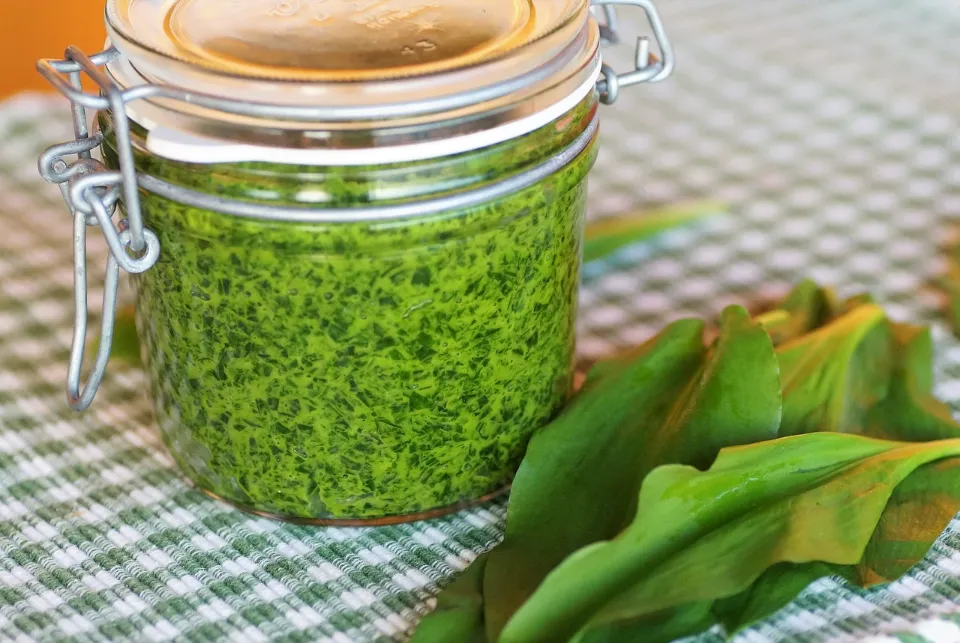
Crushed garlic, pine nuts, basil leaves, salt, and hard cheeses are the traditional ingredients in pesto, a sauce. Although many different versions of this typically bright green sauce are now available, it originated in Italy. Some businesses substitute walnuts or almonds for pricey pine nuts. Some people substitute kale or spinach for basil. Sundried tomatoes go into the making of red pesto.
What’s the Problem With Pesto?
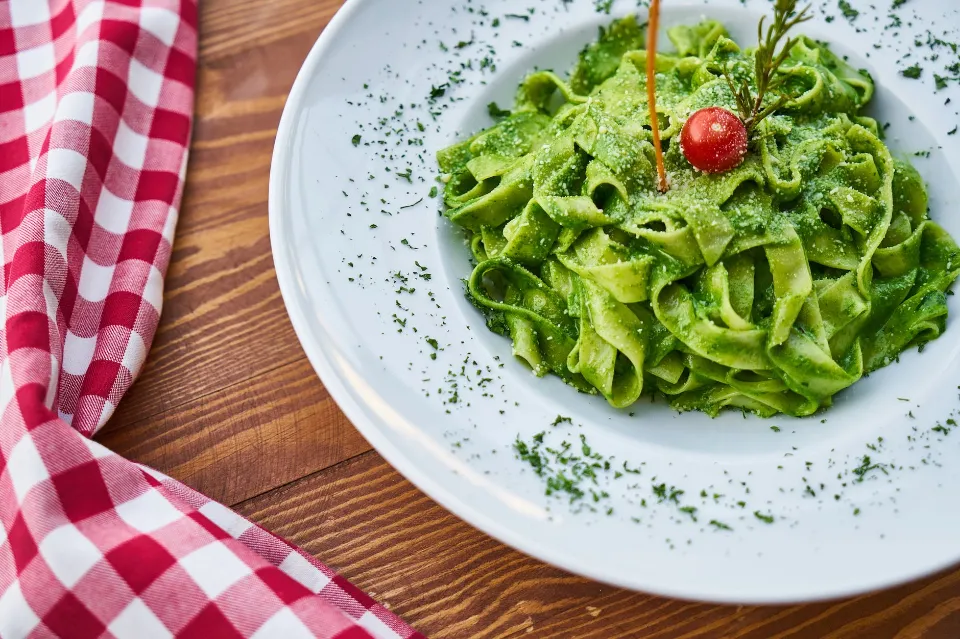
While the ingredients for pesto can differ from one recipe to the next, the sauce’s fundamental components are frequently the same. The fact that pesto contains garlic is the main drawback to feeding it to your dog. Garlic is a very healthy ingredient for humans, but because dogs digest some foods differently than humans do, it can be fatal to them.
The allium family of foods, which includes foods like onions and garlic, contains a substance that can harm a dog’s red blood cells. Thiosulfate is a substance that can lead to anemia in dogs by damaging their red blood cells through oxidative stress.
Read More: Can My Dog Drink Apple Juice
Why is Pesto Bad for Dogs?
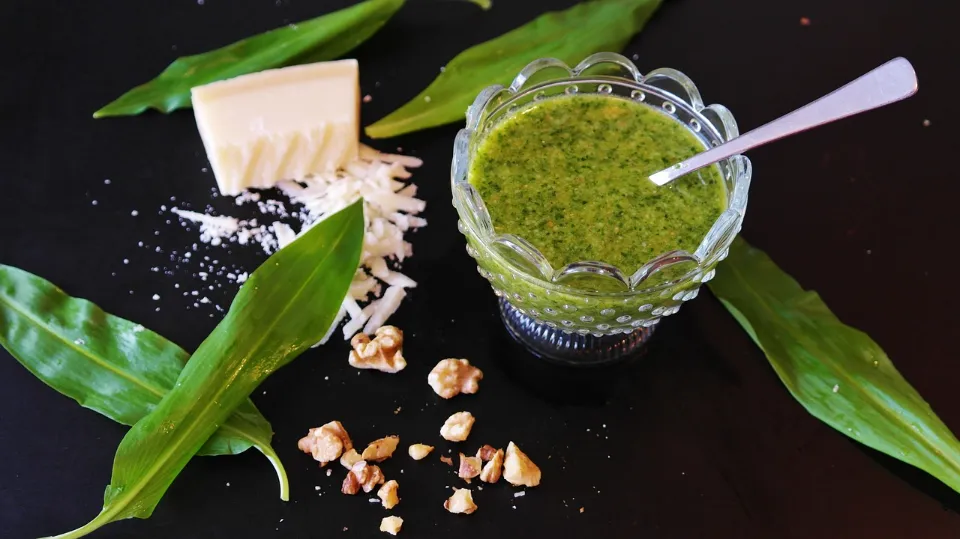
Garlic, olive oil, basil, parmesan, and pine nuts are the staple ingredients in pesto, though the exact ingredients can vary. Pesto’s other ingredients—aside from garlic—are all okay for your dog to eat in moderation.
Giving your dog a taste of this pesto should be acceptable if the pesto you want to feed him doesn’t contain garlic.
The red blood cells in your dog, however, are harmed by a substance found in garlic. Symptoms of anemia may appear if your dog consumes pesto that contains garlic. Lethargy, pale gums, and general weakness are a few examples, but not all of them.
Dehydration, vomiting, and diarrhea can all result from garlic toxicity. It is best to avoid the possibility altogether and keep this sauce to yourself even though a small lick of pesto made with garlic is probably not going to cause garlic toxicity.
Can Pesto Be Healthy for Dogs?
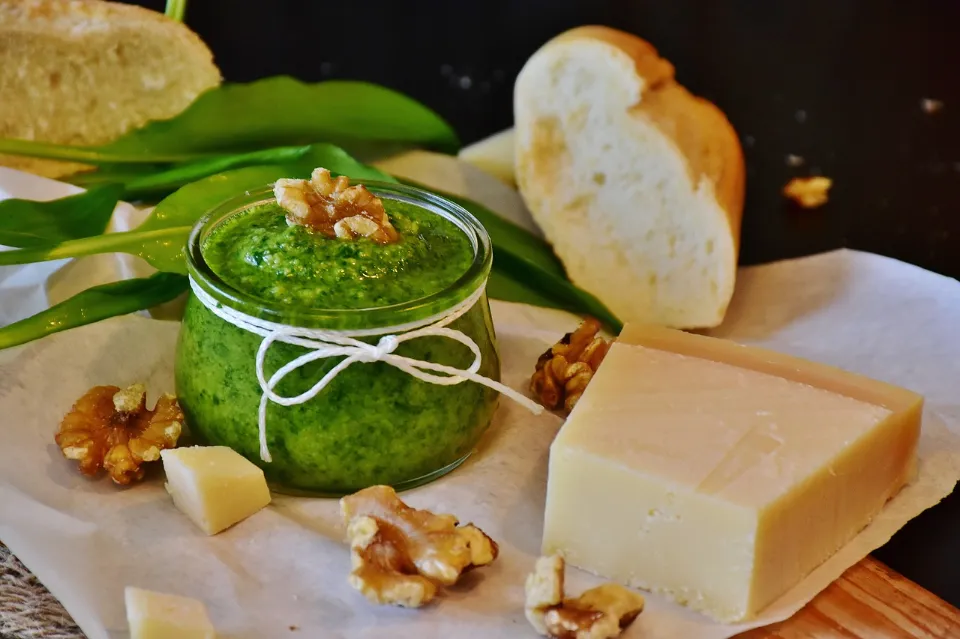
You should be able to give your dog very small amounts of pesto made without garlic, either at home or from the store. Let’s examine the other key components of this tasty sauce in more detail.
Basil is the main ingredient in pesto and is safe for pups in small amounts. Basil has anti-inflammatory properties and could help calm tense dogs.
Pine nuts are safe for dogs but are very high in fat, so they shouldn’t be offered too often. They do, however, provide a good amount of protein and essential fatty acids, which can help the skin and coat.
Parmesan cheese is often used in pesto and isn’t the healthiest cheese option for dogs. This is because parmesan undergoes an aging process that naturally raises its sodium content. Especially in dogs with heart or kidney disease, this can be a problem in healthy dogs.
Olive oil is a key ingredient in pesto. It is also a healthy ingredient that is safe for dogs, but it should only be given to them in very small doses.
What Should I Dog If My Dog Ate Pesto?
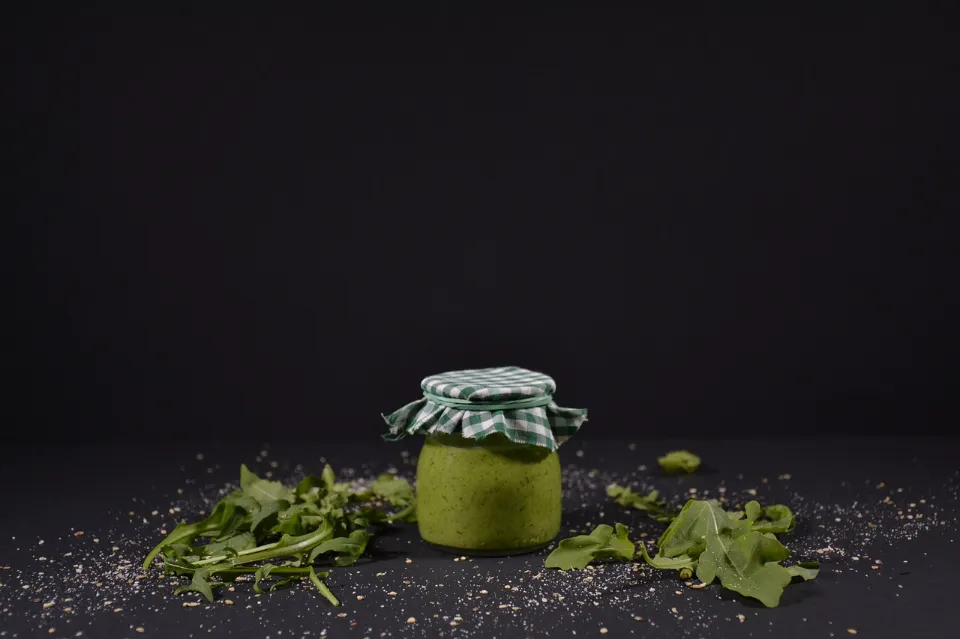
You should speak with your veterinarian right away if you think your dog may have consumed garlic pesto.
A few weeks after your dog ate garlic, symptoms of garlic toxicity might not show up. Because of this, if you contact your veterinarian right away after your dog eats pesto, you can lessen the effects of garlic toxicity and prevent an anemic episode.
In order to ensure that your dog is not allergic to any of the other ingredients, you should watch them closely if they have consumed pesto without garlic.
Final Thoughts
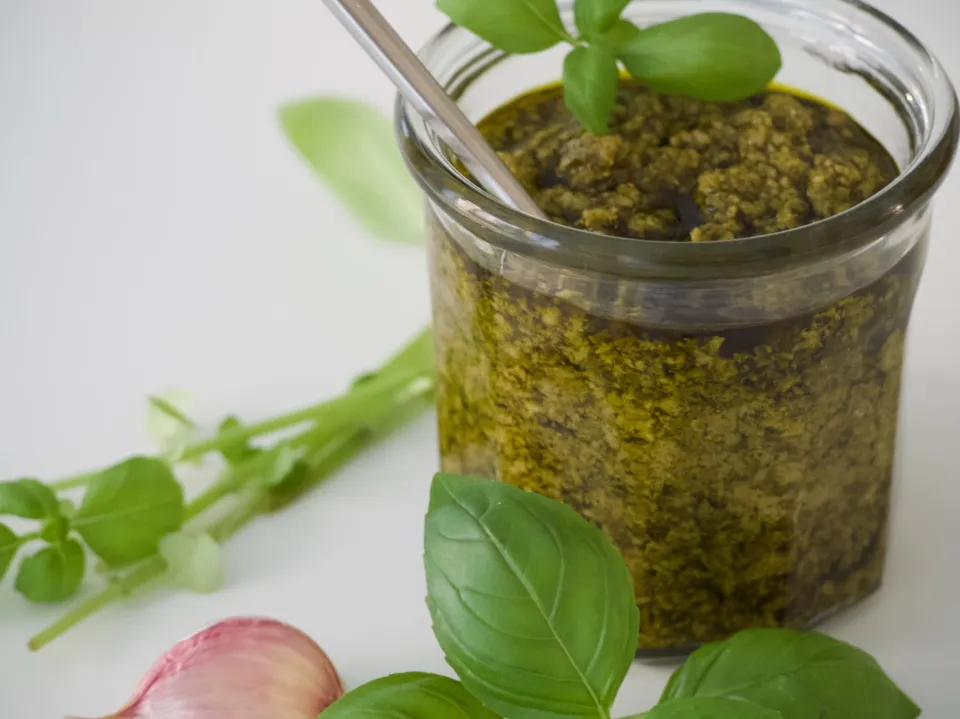
You shouldn’t give your dog pesto as food. There are no advantages to feeding the tasty sauce to your dog friend, even though it goes well in many human dishes. You can give your dog a variety of other human foods that have more positive health effects and fewer negative effects.


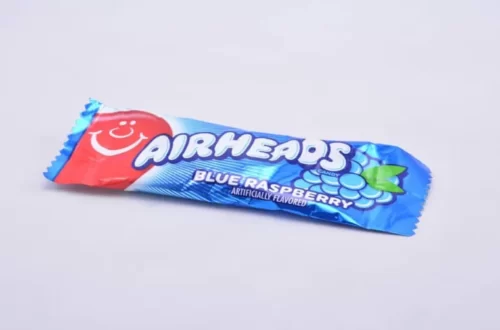


Average Rating